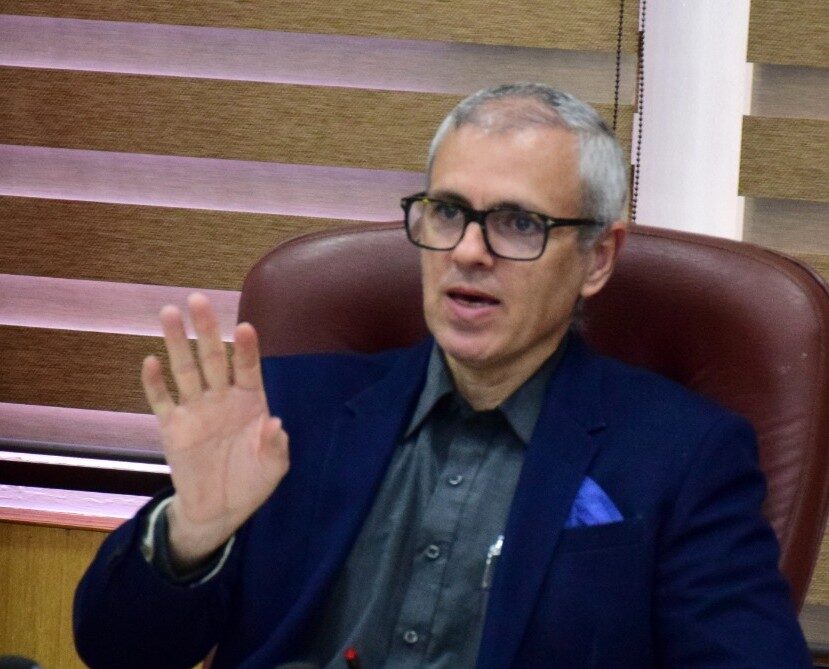Srinagar: Glaciers in Jammu, Kashmir and Ladakh are melting at a “significant” rate, according to a first-of-its-kind study which used satellite data to find that over 1,200 glaciers in the Himalayan region saw an annual reduction in mass of 35 centimetres (cm) on average between 2000 and 2012.
The study, published in the journal Scientific Reports, was carried over the Jammu, Kashmir, and Ladakh region, including areas across the Line of Control (LoC) and Line of Actual Control (LAC), and in all 12,243 glaciers were studied for thickness and mass changes.
“In general, it was observed that the glaciers in the Pir Panjal range are melting at the higher rate — more than one metre per year — while as the glaciers in the Karakoram range are melting relatively at slower rate, around 10 cms per year,” noted Professor Shakil Ahmad Romshoo, corresponding author of the study.
“Some glaciers are even advancing or stable in the Karakoram range. In other mountain ranges like the Greater Himalayan range, Zanaskar range, Shamabari range, Leh ranges, the glaciers are undoubtedly melting but the rate of melting is variable,” Romshoo, Dean of Research at the University of Kashmir in Srinagar, told PTI.
The research team, including Tariq Abdullah and Irfan Rashid, both from Geoinformatics Department, University of Kashmir, used two satellite observations made in 2000 by NASA and in 2012 by German space agency DLR.
They employed this data to determine the glacier thickness changes over the entire Upper Indus Basin, comprising of over 12,000 glaciers.
“There is no such data (satellite observations) available in the world after 2012. This is a first of its kind study in the region and provides a very good idea about what is happening to the glaciers in the region,” Romshoo explained.
Till date, he said, only six to seven glaciers have been studied in the region for thickness and glacial mass changes using field observations.
The researchers noted that while glacier melting is a continuous process and the shrinkage in area of the glaciers is being estimated routinely, thickness and mass changes are not possible always because of the lack of satellite data.
There are also limitations and challenges associated with field based studies in the mountainous Himalaya, they said.
The team noted that during one decade of observation in this study, the region has lost about 70.32 gigatonne of glacier mass, which is “quite significant.”
Romshoo noted that the continued melting of glaciers will have significant adverse impacts on every sector of economy in the region and beyond, particularly in the downstream areas which are already water scarce.
“It is pertinent to mention here that the waters emanating from this region are shared between the neighbouring countries in the south Asia,” the professor at the Department of Earth Sciences, University of Kashmir, added.
The knowledge generated about the glacier thickness changes across different mountain ranges in the data-scarce Himalayan region is vital for determining the sustainability of water resources in the south Asian region, according to the researchers.
Melting of the glaciers in Jammu, Kashmir and Ladakh is going to impact the water, food and energy security with the consequent adverse effect on the dependent livelihoods, they noted.
The researchers explained that the main drivers of the glacial melt in the Himalayan region are increasing temperatures and decreasing snow precipitation, resulting from greenhouse gas emissions from industrialisation and increasing use of fossil fuels the world over.
Romshoo noted that though there is “almost no industrialisation” in Jammu, Kashmir and Ladakh Himalaya, the mountainous region is facing the brunt of climate change happening globally.
A study, published in the journal Climatic Change on July 29, found that Jammu, Kashmir and Ladakh may witness a temperature increase of up to 6.9 degrees Celsius by the end of the century due to climate change, warning that the glaciers in this Himalayan region could shrink by 85 per cent if the projections come true.
The latest study was conducted as part of the Department of Science and Technology (DST) research project “Centre of Excellence for glacial research in the western Himalaya.”







